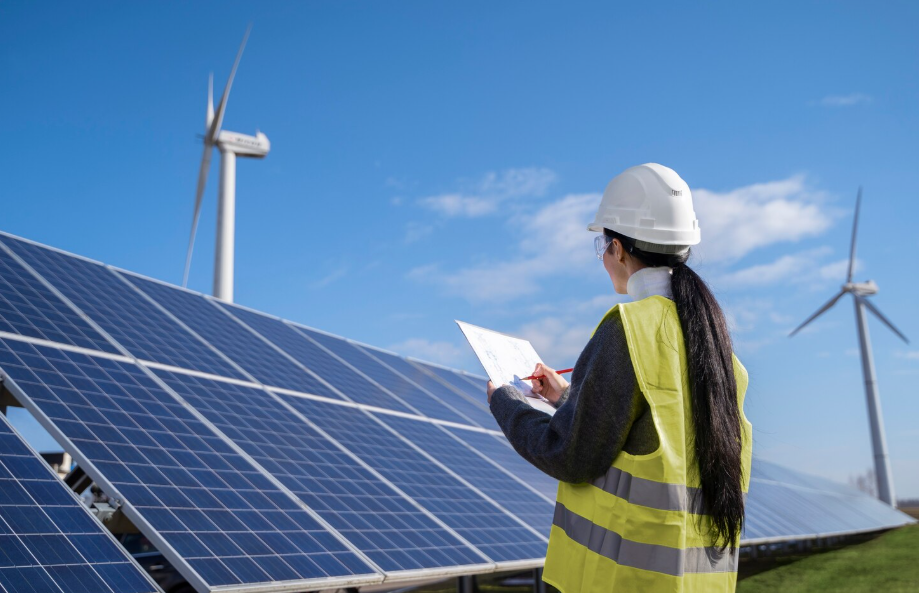
Renewable Energy
At Emmaty, renewable energy is at the heart of building a more sustainable future. We design and implement clean power systems that harness the potential of solar, and other renewable sources to reduce carbon emissions and improve energy resilience across projects.
By integrating AI-driven energy modeling, predictive maintenance, and smart grid analytics, Emmaty ensures every renewable installation operates at peak efficiency and long-term reliability. From utility-scale solar farms to hybrid renewable infrastructure, our approach combines engineering excellence with advanced technology—delivering solutions that are not only sustainable but also economically and operationally superior.
Powering a Sustainable Future
At Emmaty, renewable energy isn’t just a focus area—it’s a cornerstone of our mission to create smarter, cleaner, and more resilient infrastructure. We provide end-to-end renewable energy solutions that combine engineering innovation, digital intelligence, and sustainable design to help clients transition confidently into a low-carbon future.
Our expertise spans the full spectrum of renewable systems, including solar power generation, and hybrid renewable integration. From feasibility analysis and engineering design to procurement, construction, and commissioning, Emmaty manages every phase with precision and transparency. Our integrated EPC model ensures that engineering, procurement, and construction teams work in perfect coordination, minimizing delays, cost overruns, and technical risks.

Technology at the Core
Emmaty enhances every renewable energy project with AI-driven modeling, digital twin simulations, and predictive analytics. These tools allow our engineers to optimize system performance, forecast maintenance needs, and maximize energy output over the project lifecycle. Through smart grid connectivity and data-based energy management, we deliver infrastructures that intelligently balance demand, storage, and generation for greater operational efficiency.
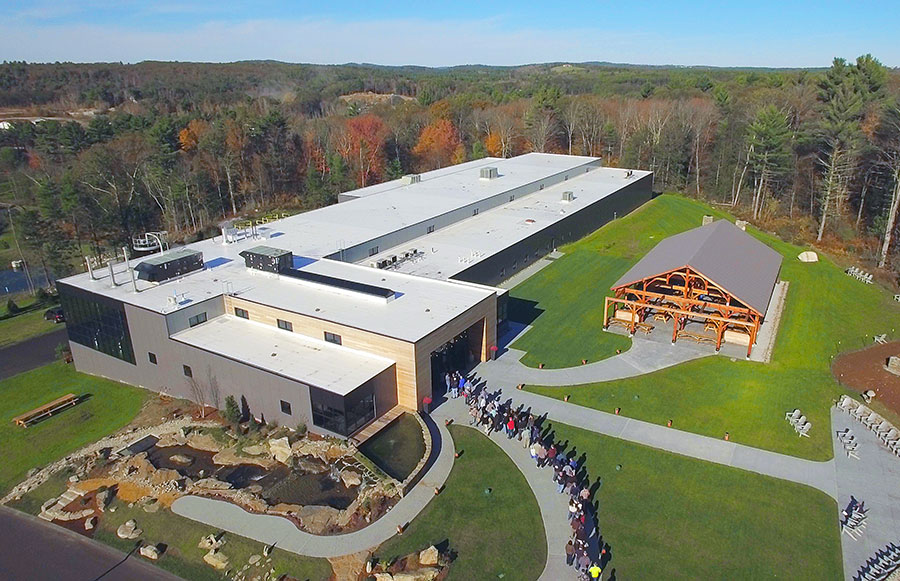
Sustainability Meets Performance
Our approach merges environmental responsibility with economic viability. Using advanced materials, automation, and robotics, Emmaty ensures renewable installations are built faster, safer, and with superior quality control. From utility-scale solar farms and industrial rooftop arrays to microgrids and energy storage systems, we tailor every solution to the client’s energy goals, site conditions, and long-term sustainability vision.
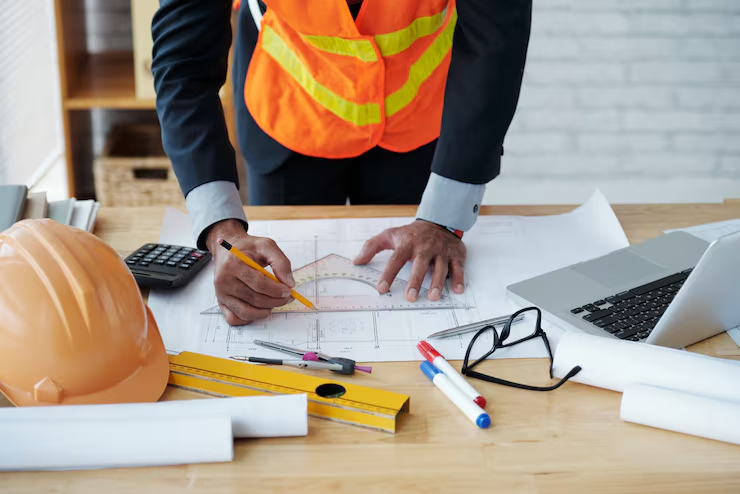
The Emmaty Advantage
With a team of experts in engineering, construction, and artificial intelligence working under one roof, Emmaty transforms renewable energy delivery into a seamless, technology-driven process. We help clients reduce emissions, enhance efficiency, and future-proof their assets—creating energy systems that not only power communities but also empower progress. Renewable energy, reimagined through innovation. That’s the Emmaty way.
Electric Power Infrastructure Solutions
Emmaty’s Electrical Power Infrastructure division offers end-to-end solutions for transmission, distribution, substations and underground power systems, built for any size project and any terrain. With a team of experienced transmission-line contractors, qualified technicians and high-tech equipment, Emmaty handles everything from design and installation to repair, relocation, and full maintenance of power delivery systems.
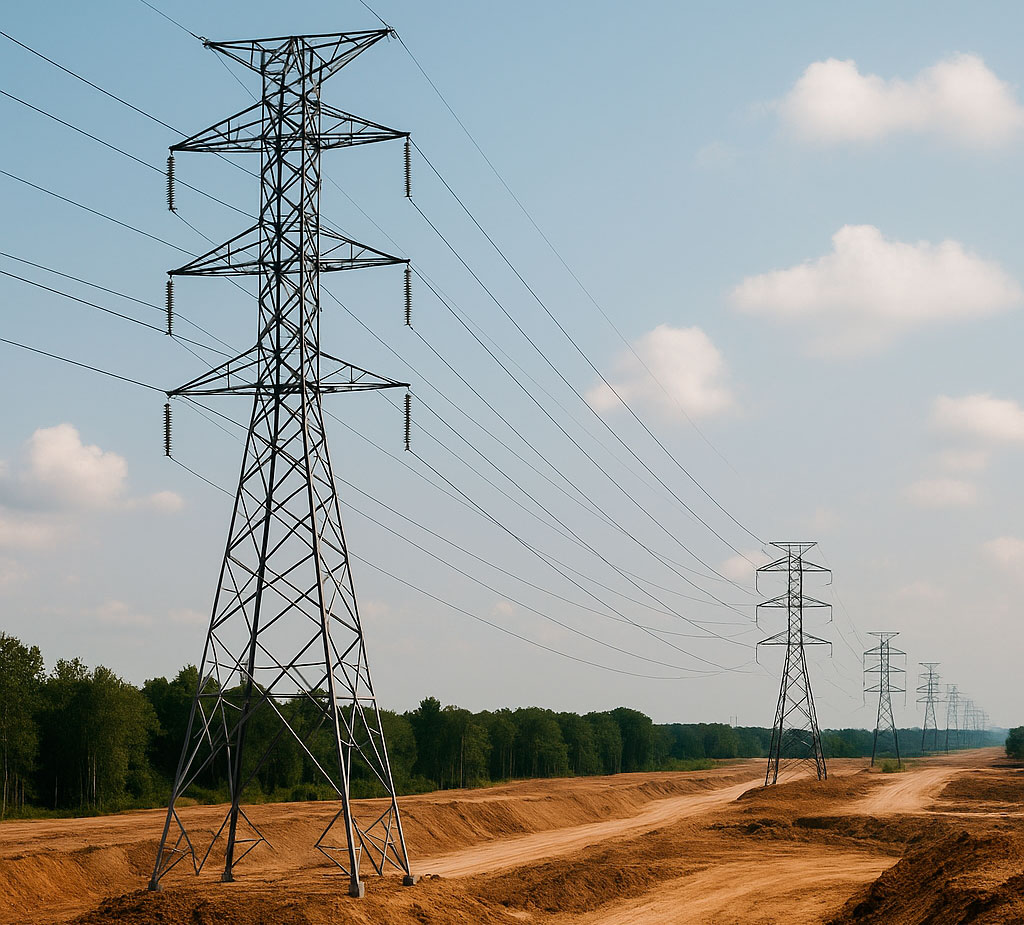
Transmission
Our services include energized work on live systems, tower erection, exchange and replacement of towers, rerouting and installation of power duct bank systems, and full maintenance throughout the lifecycle of the infrastructure.
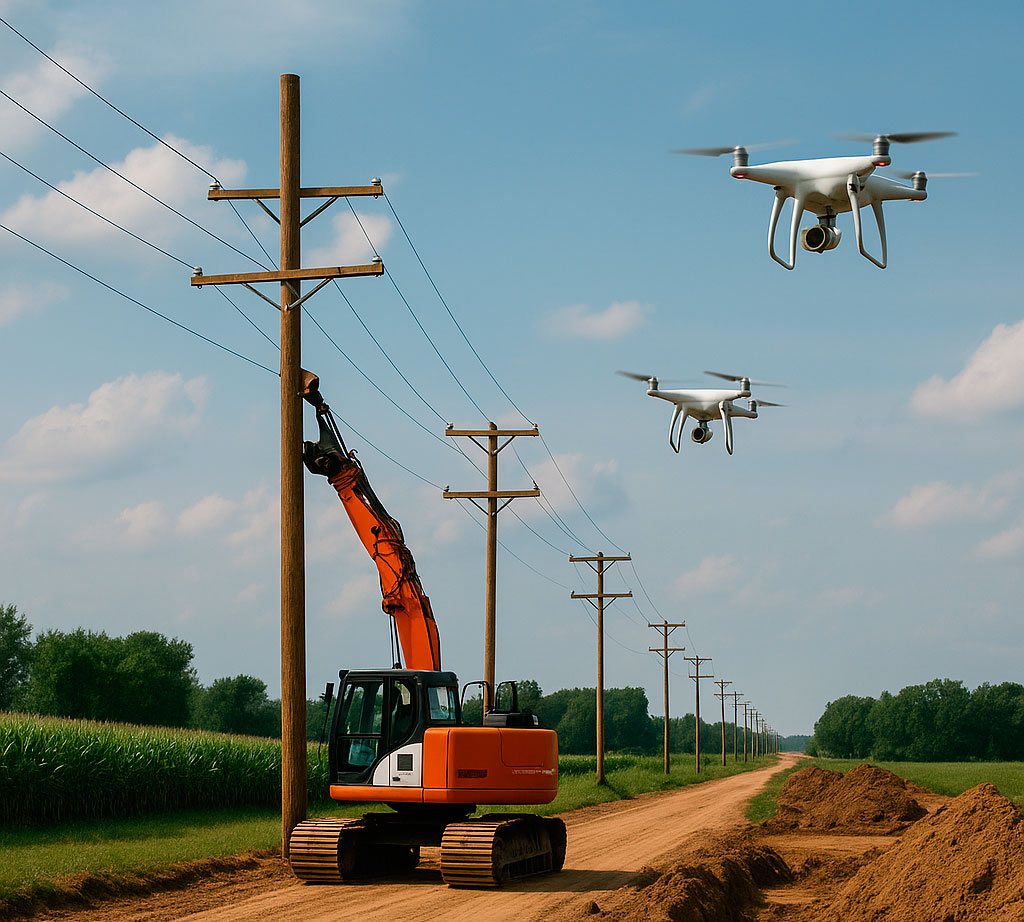
Distribution
We provide comprehensive design and engineering for distribution networks, overhead pole lines and underground buried cables, primary voltage conversions, pole replacements, circuit re-conductoring, relocations for road widening and make-ready work for communication infrastructure.
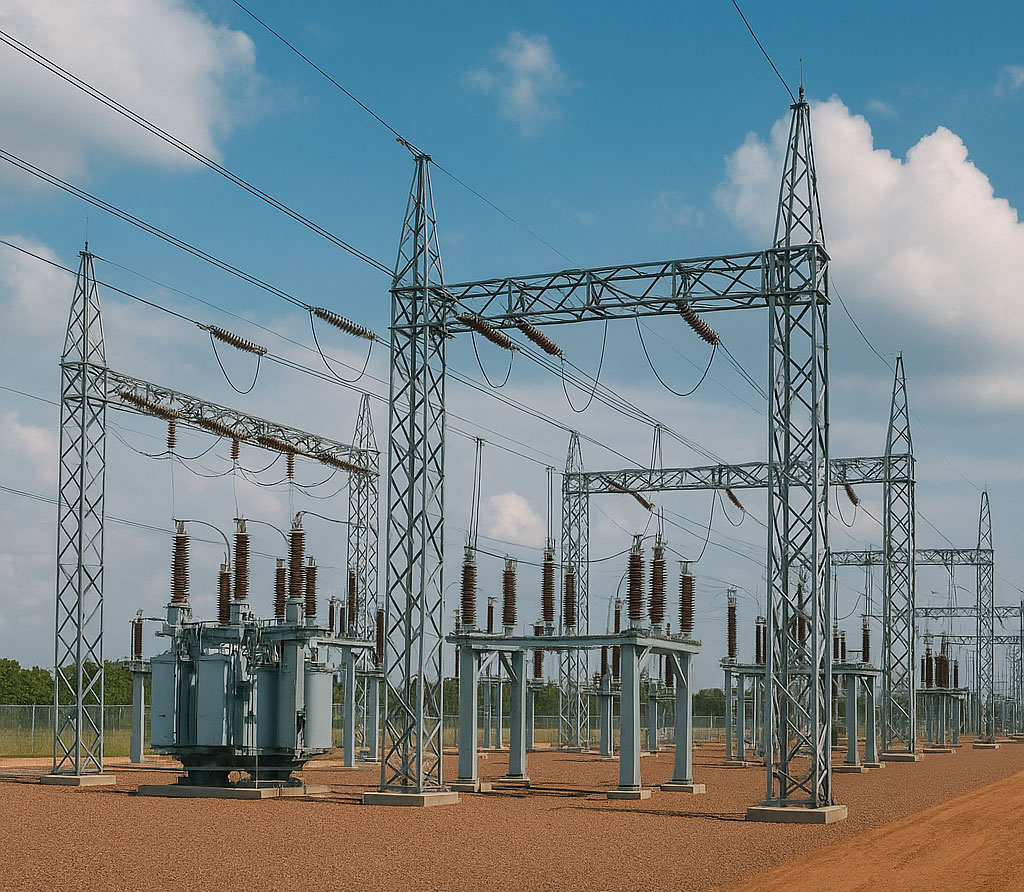
Substation
From foundations and cable trenching to buss work, automation systems and commissioning, Emmaty covers all core substation services including network planning and substation automation.
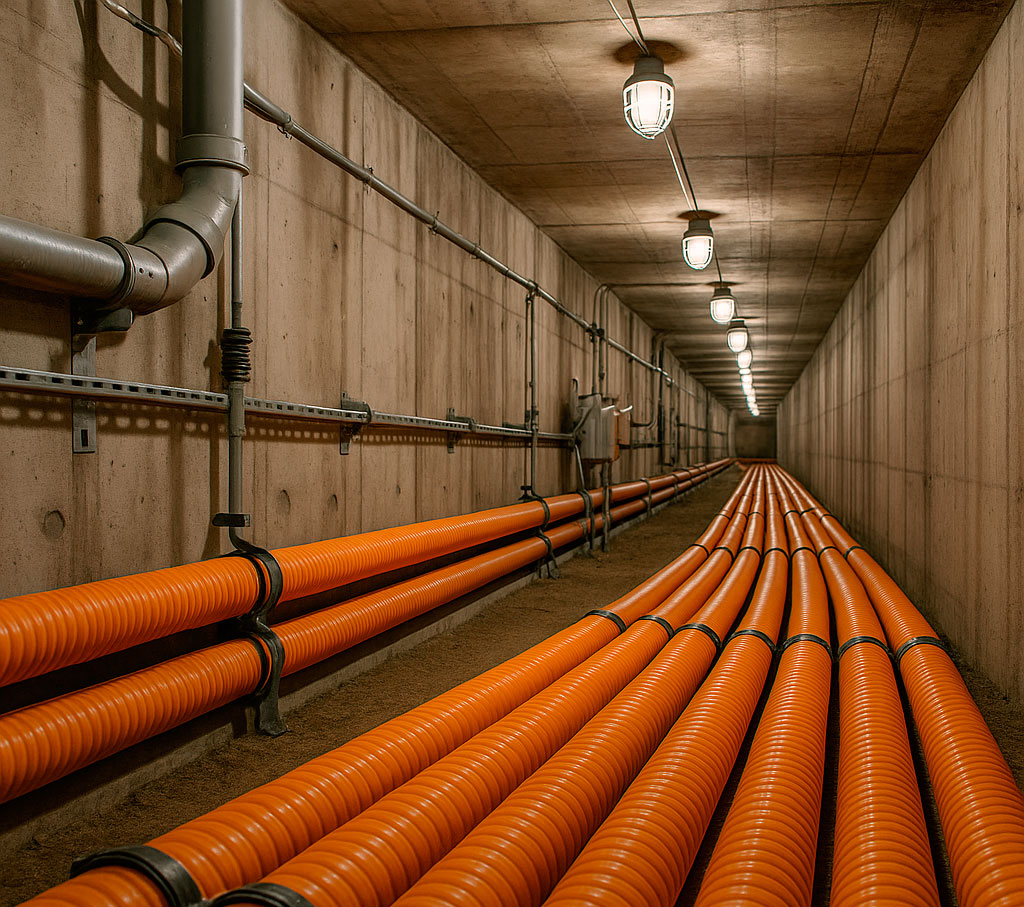
Underground Electric
Emmaty offers vault construction for cable splicing, manhole repairs, conduit and duct bank construction, installation and maintenance of underground networks, cable replacement and detailed data analysis & reporting of system performance.
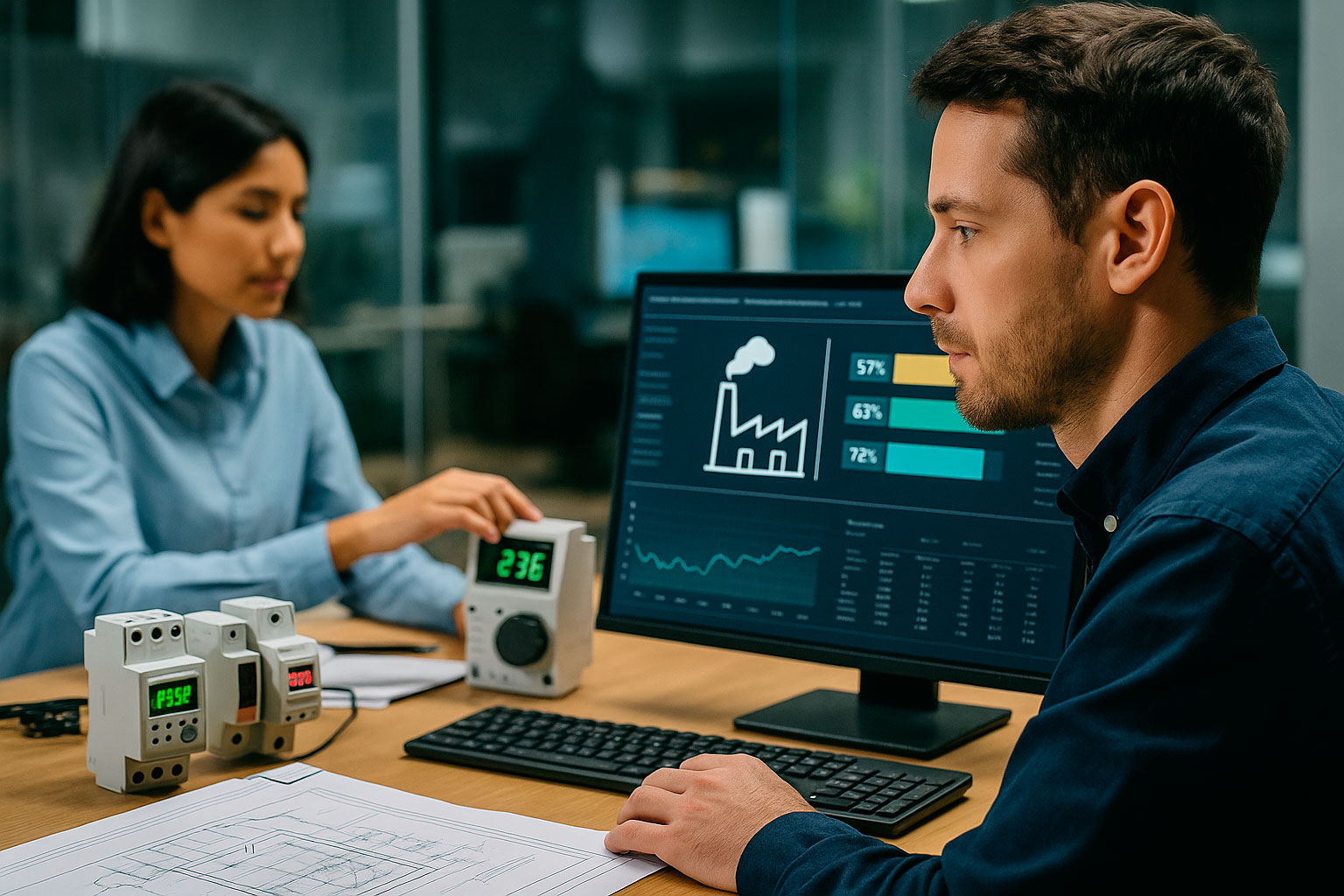
Energy Management
Emmaty’s Energy Management offering is designed to empower clients with data-driven, technology-enabled solutions that reduce costs, improve performance, and support sustainability goals. From initial audit through to operations and maintenance, our team of energy service experts guides clients through both the financial and execution aspects of tailored projects.
What We Provide
The Emmaty Advantage
Comprehensive energy audits and retrofit programs: by assessing systems like HVAC, lighting and controls, we identify outdated or inefficient equipment and processes and implement targeted improvements.
Advanced metering infrastructure (AMI/AMR): we design and deploy smart‐metering systems which automatically collect utility data (electricity, water, gas) into a centralized analytics platform—enabling informed asset-management decisions and long-term planning.
Intelligent lighting and controls: Emmaty installs IoT‐enabled lighting networks that optimize usage based on occupancy or daylight, improving safety, comfort and operational efficiency in facilities like offices, schools and healthcare.
Central plant optimization: we link multiple building or campus systems into a unified data and control platform so equipment runs at peak efficiency, reducing energy consumption, lowering cost and achieving faster return on investment.
By combining engineering expertise, construction capability and digital analytics under one roof, Emmaty delivers a seamless service: equipment is selected and installed by our in-house teams, data is collected and analyzed in real time, and performance improvements are sustained through continuous monitoring.
Whether your goal is achieving an ENERGY STAR® rating, earning LEED certification, or simply lowering utility expenses, Emmaty identifies financially viable energy-management solutions and executes them with precision. The result: safer, smarter and more sustainable operations that benefit both your bottom line and the planet.
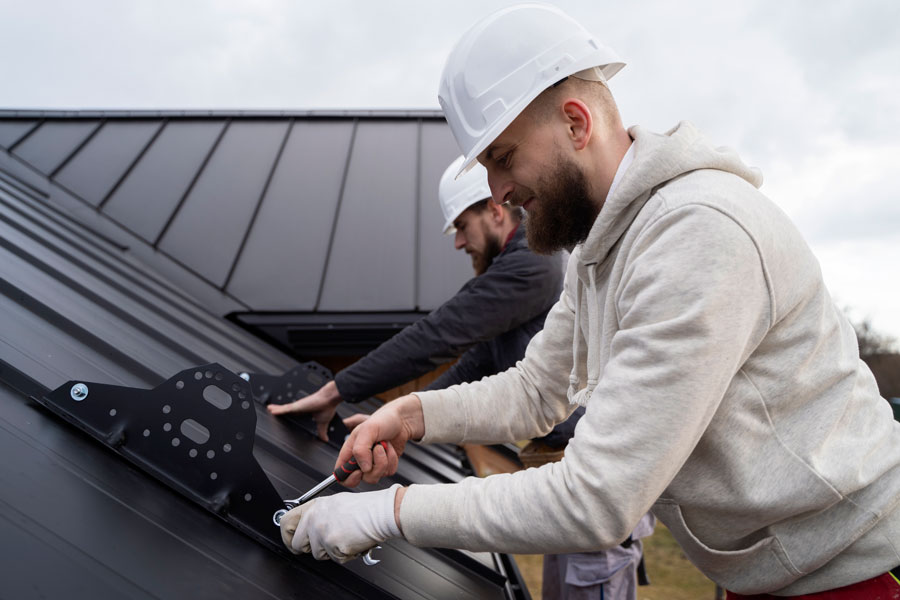
Commercial Roofing Systems
Assisting you in determining your commercial roofing options – All major roof systems are installed by experienced crews who deliver unrivaled craftsmanship and are backed by a Single Source Warranty.
TPO
Thermoplastic Polyolefin
PVC
Polyvinyl Chloride
EPDM
Rubber Roofing
MODIFIED BITUMEN
Modified Roofing
BUILT-UP ROOFING
BUR

TPO: Thermoplastic Polyolefin
TPO membranes are made of a co-polymerized rubber, which gives them greater flexibility in cold climates.
This membrane is best known for providing the advantages of EPDM and PVC systems at a lower cost. TPO membranes are white and highly reflective, making them an excellent choice for those looking to reduce energy costs. TPO is an environmentally conscious system in addition to being ENERGY STAR rated. Furthermore, TPO roofs are long-lasting and resistant to dirt, bacteria, and debris buildup, making them highly resistant to tears, punctures, and impact damage.
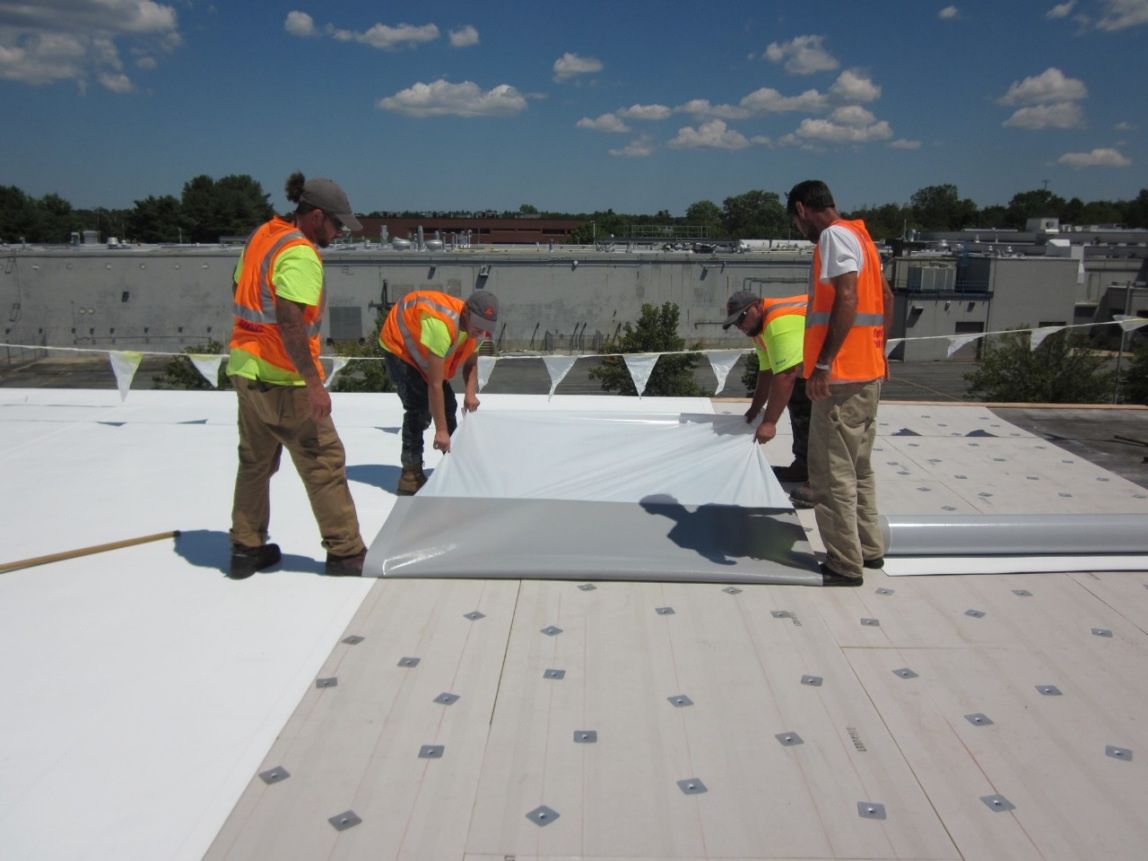
PVC: Polyvinyl Chloride
These systems are among the easiest single-ply roofing membranes to install and heat-weld together. These roofing systems are able to resist various chemical effluents and provide superior resistance to punctures and tears.
They are available in a variety of colors, thicknesses, widths, and reinforcements, making them an excellent option for almost any roofing project.
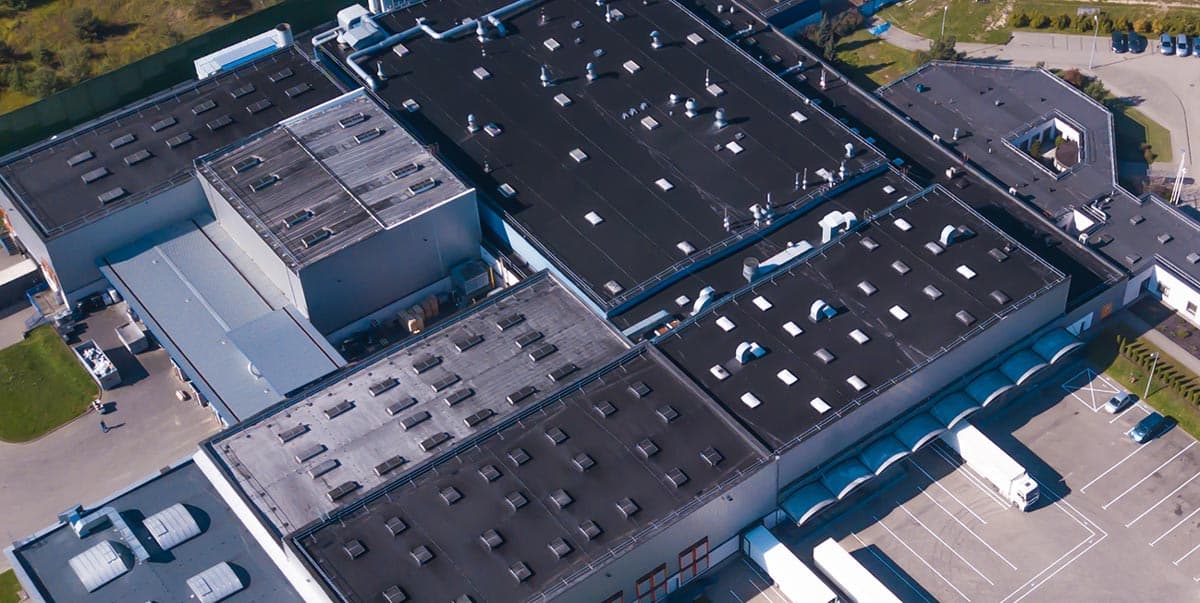
EPDM "Rubber Roofing"
This system is a black single-ply membrane, often referred to as “rubber roofing”. EPDM systems require minimal maintenance and are resistant to UV radiation and ozone.
EPDM technology has proven effective for more than 40 years. It is able to withstand extreme temperatures and expands & contracts with the building.
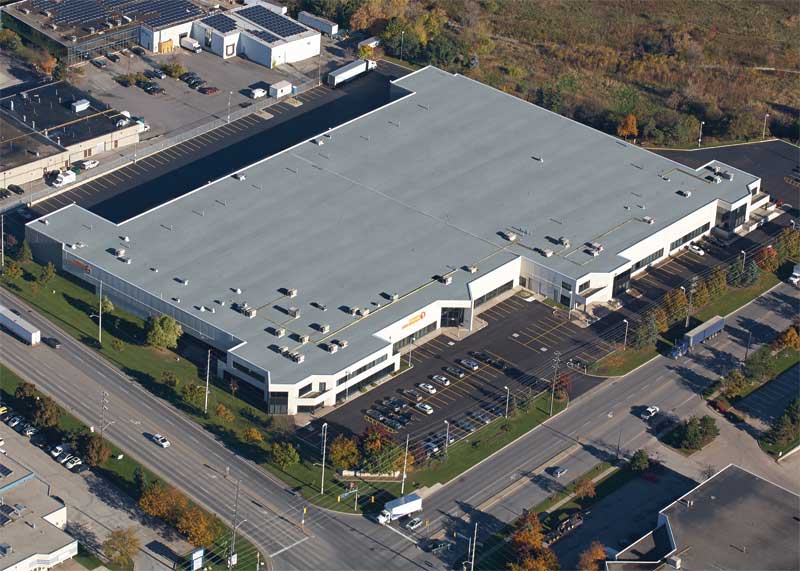
MODIFIED BITUMEN "Modified Roofing"
This type of low slope roofing material is referred to as modified bitumen due to it’s material makeup which consists of modifiers that are added to standard roofing asphalt to replace plasticizers removed during the distillation process.
Bitumen is reinforced with fiberglass or polyester fiber matting in order to increase durability and strength.
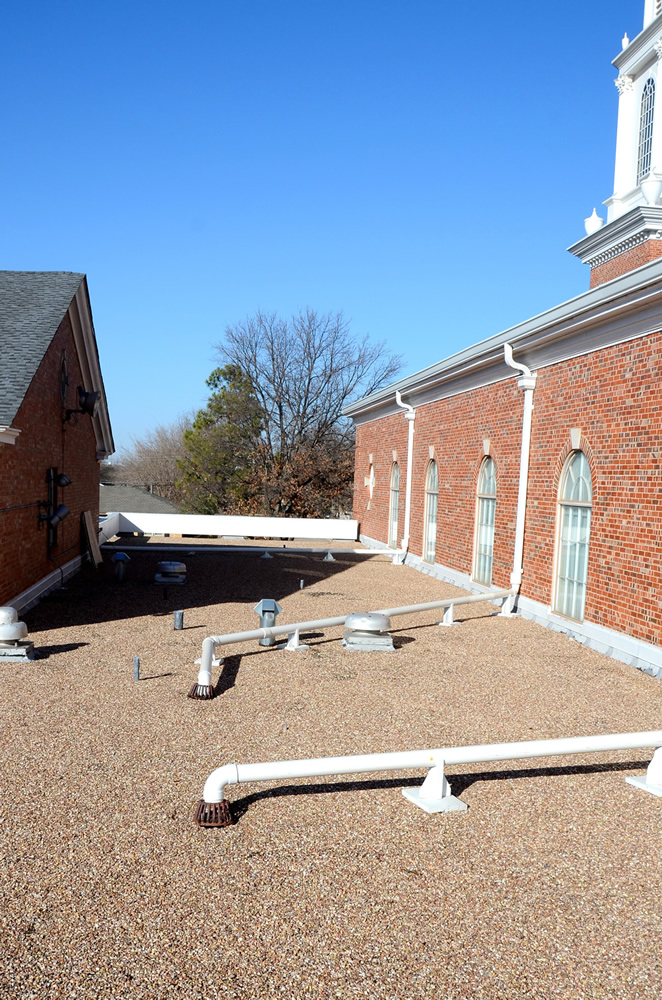
BUILT-UP ROOFING "BUR"
This type of roofing utilizes more than one layer of water-proofing membrane to keep the water out of your building. Built up roofing systems, often referred to as BUR, have been utilized in the U.S. for over 100 years.
The bitumen typically used in built-up roof systems is asphalt, coal tar or cold-applied adhesive. The asphalt or coal tar is heated in a kettle or tanker and then applied by mop or mechanical spreader. Cold-applied adhesives do not have to be heated to be applied since these adhesives are solvent-based asphalts.
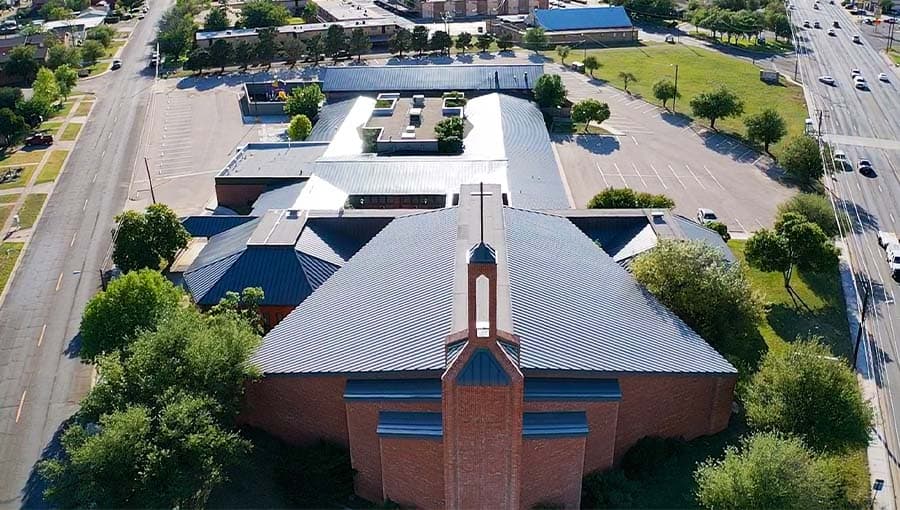
METAL ROOFING
Metal roofing is a staple of the commercial roofing market because of the material’s outstanding durability, design flexibility and low lifecycle costs. More and more commercial, industrial, and small building owners are selecting metal roofing for a portion of, or the whole, roofing assembly such as banks, schools, restaurants, warehouses, distribution centers, etc.
Metal roofing and wall panels are a great low-maintenance solution that provide commercial grade performance while still enhancing the aesthetics of the building.
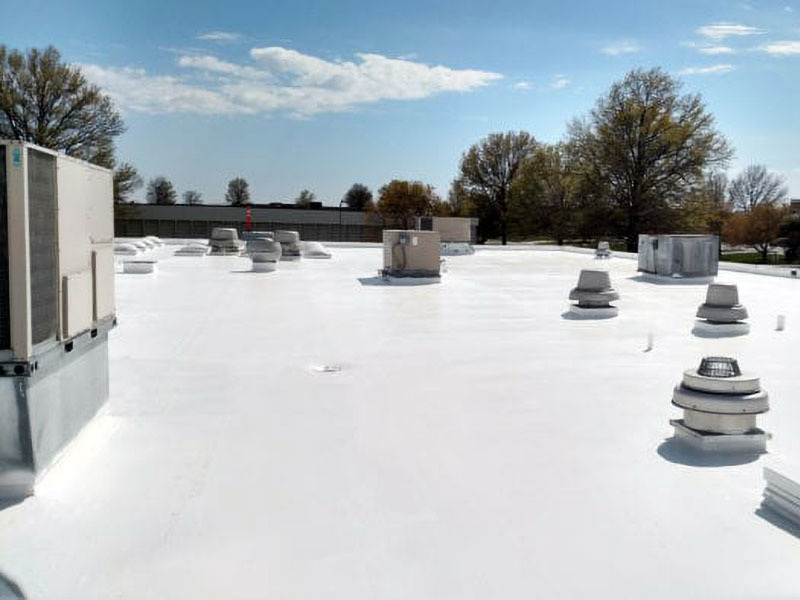
ROOF COATINGS
Roof coatings are liquefied polymers applied to protect and extend the life of a roof system.
Coatings provide a seamless application that conforms to irregular roof surfaces, as well as seals cracks and splits in the roof surface. Coatings can be applied to address a variety of roofing concerns.
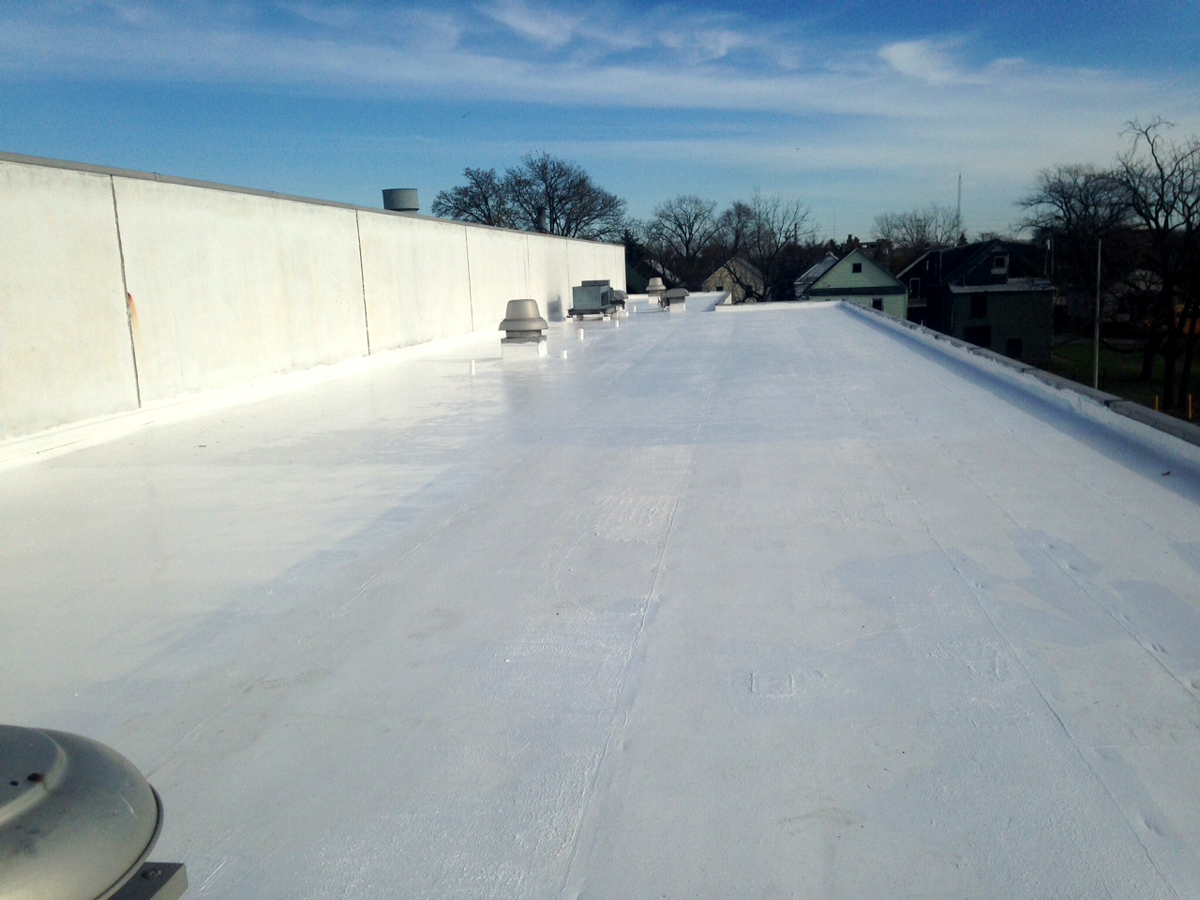
SPF: Spray Polyurethane Foam
SPF is applied in the form of a liquid. It is seamless and self-adhesive, requiring no fasteners. This adaptable installation method allows it to fit into tight and awkward roof spaces. SPF roof systems are waterproof, hail and wind resistant, and have the highest R-value (measure of heat resistance) of any roofing material.
When it comes to longevity and performance, few commercial roofing materials are more impressive than spray polyurethane foam (SPF). Spray foam roofing systems are the best solution to increase energy efficiency and improve interior comfort.
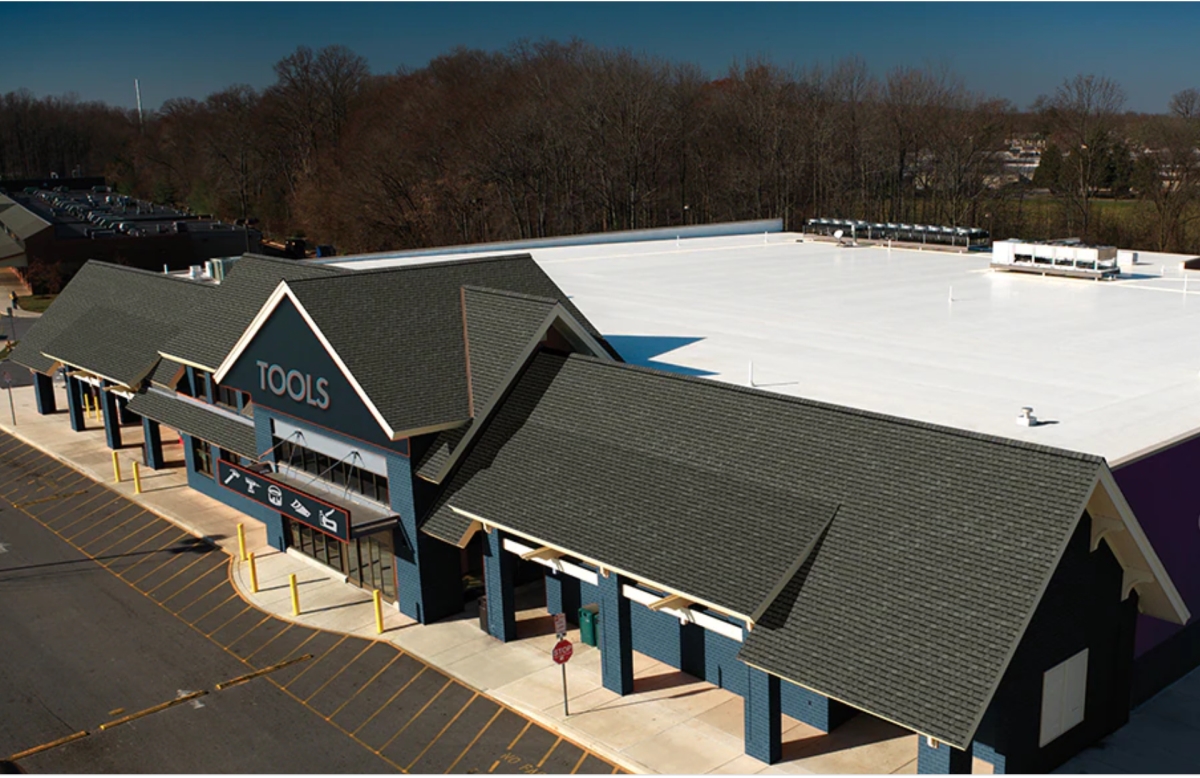
STEEP SLOPE
Steep slope roofing typically refers to roofing materials that are appropriate for roofs with slopes of 3:12 or greater. This means that the roof rises three vertical inches or more for every 12 horizontal inches. Asphalt roll roofing, asphalt shingles, concrete and clay tiles, wood shakes, slate, and metal roofs are all suitable for steep slope roofs.
Due to the natural pull of gravity, debris and water on a sloped surface tends to roll into gutters creating less concern about excessive weight from accumulated debris and standing water.
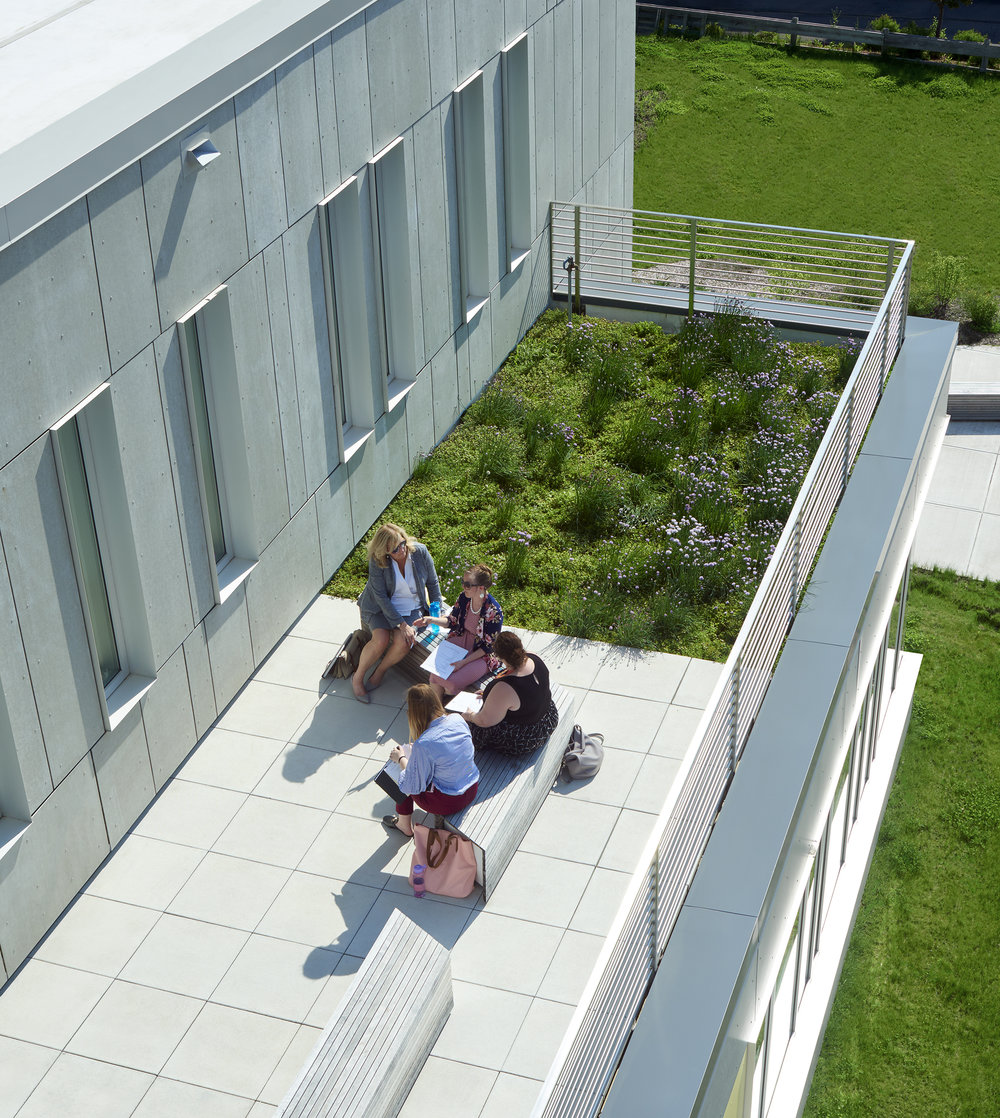
GREEN ROOF
Metal roofing is a staple of the commercial roofing market because of the material’s outstanding durability, design flexibility and low lifecycle costs. More and more commercial, industrial, and small building owners are selecting metal roofing for a portion of, or the whole, roofing assembly such as banks, schools, restaurants, warehouses, distribution centers, etc.
Metal roofing and wall panels are a great low-maintenance solution that provide commercial grade performance while still enhancing the aesthetics of the building.
Why Choose Emmaty
- We focus on workmanship and attention to detail.
- Your projects are OSHA compliant.
- We protect our customer’s properties and employees, all in concert with regular business operations.
- Crews attend mandatory safety and installation training on a regular basis.
- We keep our customers’ buildings watertight.
- Your project is completed by experienced, specialized experts every time.
- Your project is covered with Single Source Warranty
- Complimentary Roof Inspection
